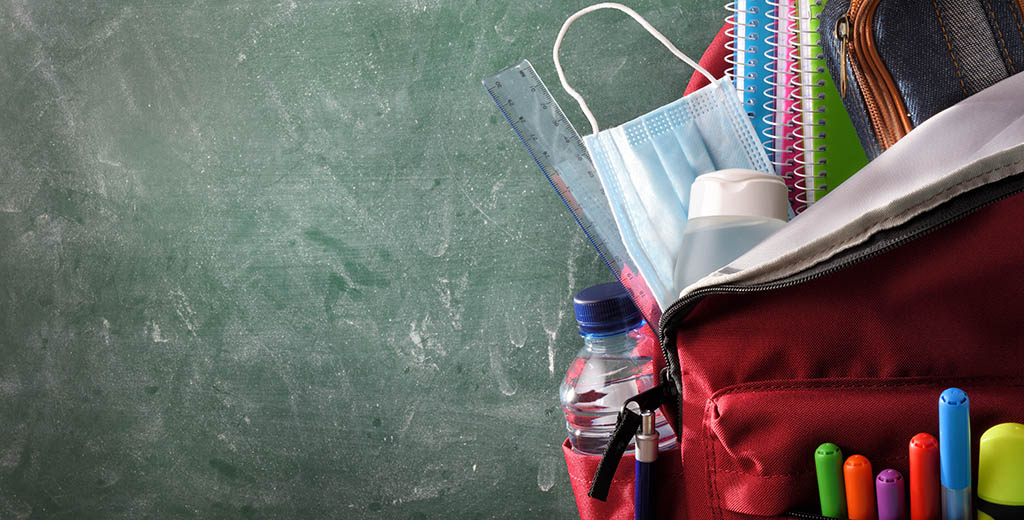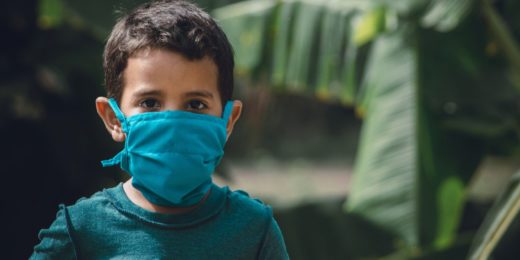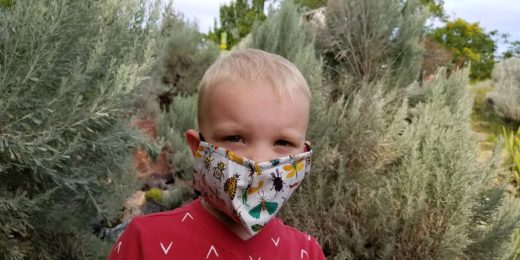Educators across the country are making tough choices when planning for this school year. Many are extending virtual learning plans launched when the COVID-19 pandemic arrived in the spring, while others are reopening classrooms for in-person instruction or doing some combination of the two.
Stanford Medicine pediatrician Jason Wang, MD, PhD, reviewed the American Academy of Pediatrics guidelines for schools choosing to reopen, analyzing the academy's recommendations to provide a realistic view of the costs involved in sending children back to school safely.
For a recent 1:2:1 podcast, I asked Wang about best practices for keeping schools safe and why it's important for kids to have in-person learning when possible.
This Q&A is condensed and edited from our conversation.
You recently returned from Taiwan, where you went to observe how schools are doing since they reopened in February. What did you find?
Because they experienced SARS in 2003, they were aware of how quickly pandemics could spread. With COVID-19, a few weeks before school reopened, each school was issued guidance from the Ministry of Education on what and how to prepare. Their process is very meticulous. Each student's temperature and symptoms are recorded and reported to the ministry every day by noon. They then decide whether a child should stay home, or get screened and tested. It's quite an effort.
What did you discover that is replicable in the United States?
Children, even when they were very little, were taught how to wear masks and keep them on -- even 2- and 3-year-olds. It became like an exercise with all sorts of tricks. You sing a song or play a game to keep the mask on. If we can train young children for toilet training, it's possible to train them to keep their masks on and social distance. We just need to allow them to be able to model and learn.
Also, in Asia they've taught kids how to wipe down their desks and surroundings, taking a few minutes at the beginning, middle and end of the day to do that.
You have talked about the difficulties some kids will face if schools don't open. Can you explain further?
When we close down schools, it disproportionately impacts low-income families. Those communities are getting a double whammy during the pandemic. A lot of the parents are essential workers, so they can't stay at home with their kids to help them learn. Also, some households are crowded, and students might not have the technology they need, so it's difficult for them to go online to learn.
In addition, many kids in low-income households get food through the National School Lunch Program. If they're not in school, maybe they won't be able to eat unless meals are delivered to them.
Is COVID-19 testing feasible for school districts?
The cost and availability of tests have been a concern throughout the pandemic. We're talking about 55 million kids, K-12, in this country -- 6.2 million in California alone. Right now, the cost of PCR test is very expensive, around $50 to $200 per test. If you could do a rapid test like an antigen test where you test for the protein, the cost could be lowered to maybe $5 or $10 per test. Still, if you were to test everybody, once a week, that's a significant amount of money.
It's going to be expensive if we introduce tests into the equation. There are different strategies: Maybe you test people who have health conditions that put them at a higher risk, or people who show symptoms. Occasionally, you could do a random test of 10% of the school just to see if there are asymptomatic infections.
As a pediatrician, what do you think parents should consider as their kids to return to classrooms? And why is it important for children to go back to school when it's safe?
There are three things that I think about. Safety is first. Ask your children to wear a mask at school, to wash their hands as often as possible and to social distance.
Second, is the educational outcome. We have to make sure that, given all these changes, kids are still able to learn in the physical school environment, and that any face time they get with their teacher maximizes that experience.
And, third is the social experience. Children go to school to make friends as well as learn. It's actually a big component of school. They need to learn how to interact with their friends through masks and keep a social distance, and still have good friendships.
Then you may need to help them carry those friendships both online and offline. The new generation of kids -- the digital natives -- have learned how to do that already. Physical school will actually increase and enhance the experience of friendship, I believe.
Listen to more 1:2:1 podcasts on COVID-19 from Paul Costello at https://soundcloud.com/stanfordmed/sets/covid-19
Image by Davizro Photography






